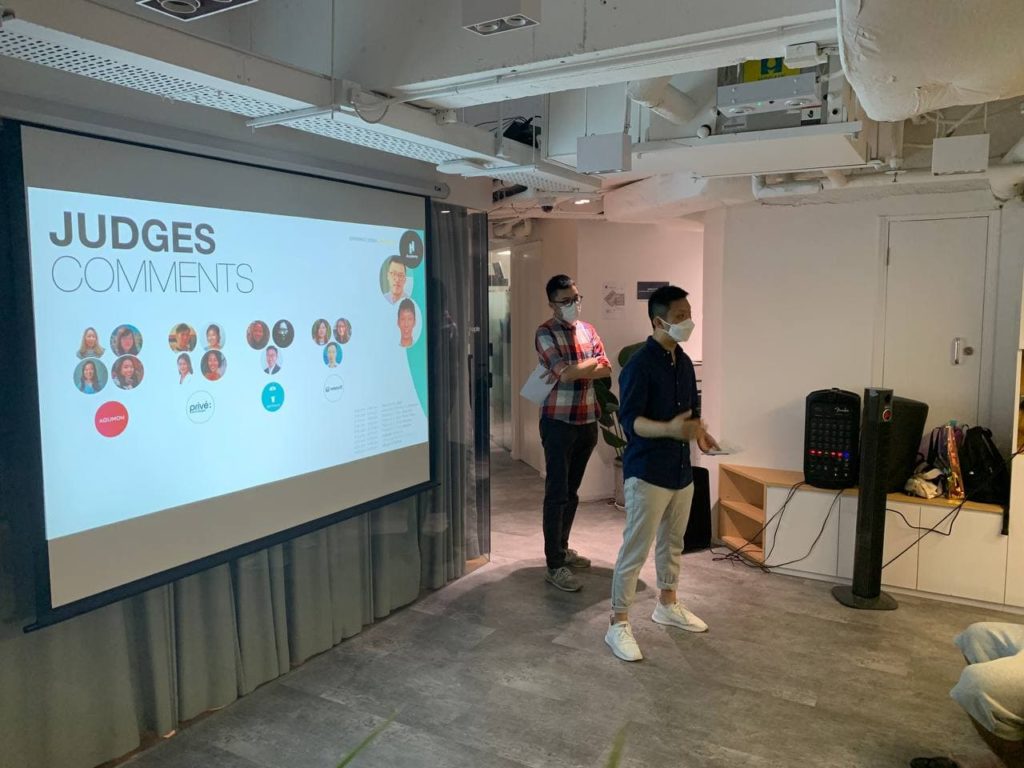
This post is dedicated to those that have just graduated from their UX design bootcamp.
Last week, I was really happy to be invited back to be a guest for my friend Michael Tam (Global Design Director @ IBM iX)’s experience design course student graduation ceremony. Part of that ritual is that the students would be presenting their final work to their clients.
Seeing more and more people become interested in UX makes me really happy. As those close to me know, I have a grand vision that one day, Hong Kong’s UX maturity would be at the same level as the United States. Passing on my industry knowledge is my humble contribution to this granular goal.
For the student’s work presentation, the guests were to look at the following criteria and provide constructive feedback:
- Design thinking
- Design Craft
- Business relevance
- Presentation
I wanted to elaborate a little bit more on the above criteria and turn them into lessons I learned throughout my career as my advice for UX graduates.
Design thinking
People are good at recognizing problems and bad at solving them. You have probably learned about Double diamonds or the idea of divergence and convergence, but why does it matter?
When you go to a doctor’s appointment, they always ask you how you’re feeling. Why? Because you’re the expert on you. No one else better understands how you feel. However, the doctor won’t ask you how to solve your problems because they’re better equipped than you to do that. The same is true in UX design.
Your stakeholders have a better understanding of how they feel about their business than you do. They can tell when something is wrong, but they’re not as equipped to solve it. They may say NEED to redesign their website, listen carefully, they are offering you a solution. Just as a patient might tell a doctor “I got flu”, will a good doctor go on and prescribe medicine right away? No, the doctor goes “Maybe, let’s find out”.
When a client comes to you and says they have a low conversion rate, that is a symptom. Redesigning their website might be one of the solutions, but we need to first understand the nature of the problem. What are the possible explanations for the low conversion rate? You are selling to the wrong audience, lack of trust, poor copywriting, you have a weak brand…etc. That’s why we need to diverge our thinking first in the beginning and converge it in the end, or we risk jumping into solutions too quickly and solving the wrong problems.
Use your stakeholders as a resource to help figure out what is wrong with their business, but take it with a grain of salt when they offer you solutions.
Design Craft
Design what users want, not what the designer wants. As designers, we have a lot of egos, which is great, because creating things is hard, and it takes ego to will something into existence. We also have a lot of cool ideas, sometimes we want to challenge conventional wisdom! Why do all app components look the same? Why does the Back button always have to be on top left? Let’s make it top right or at the bottom!
The thing is, our users are not us. You might think and breathe your product because you spend 8 hours every day staring at it. The truth is, your product is not the user’s center of attention, they want to use your product to get things done so they can get on with their life. Like spending time with their family and their hobbies.
As a designer, you have a lot of power because you can make your users do whatever you want them to do through the product you designed. They have to obey your rules. The problem is that the users have even greater power than yours — they can stop using your product. If you don’t make the product enjoyable for them, they’ll move on to a product that does.
This is especially hard for me when I first started. As a junior designer, I was eager to prove my self-worth. I wanted to show everyone my design was different. I thought I knew it all and wanted my design to stand out. As a result, I created something that only I the designer wants. I build features that I felt would be cool without truly understanding whether people will like it. In the end, users were frustrated about the changes I made.
Make the users do something they inherently want to do, not something you, the designer, forced them to do.

Business relevance
Stop selling design, sell the results. No one really cares about design or your design process. What people mean when they say they “care” about good user experience design is what good design can do for them. For business, it means selling more products or services. For customers, it means when they are using your app they feel in control and they can do whatever they want without thinking about it.
It might be hard to hear, how could someone not care about design? You know what, that’s OK! They don’t have to love UX design the way we do. It is our job to love what we do, not theirs! But if we keep talking about design without making it relevant to our audience, we will never gain their buy-in. Start talking about what the design can do for them, why is it relevant to them, and people will start to listen.
The right way to explain your design process
A challenge you 100% would face is how to explain the design process to your stakeholders. Most of the time I would hear designers explaining the design thinking process as “the ideal design process”. I beg to differ, I like to phrase it as a “Tried and true risk management strategy.”
Each process in design thinking is a way to help business to reduce their risk, as building a product involves a lot of uncertainties, we want to break down the steps into smaller pieces and de-risk each of them. If you think of the design process as managing risk, it helps you to speak the language of stakeholders and they will have an easier time understanding it.
Can we dive into solutions right away? Yes, we can, but we might risk solving the wrong problem as I already explained in the visit a doctor example above. Can we not do research? YES! If you are 100% confident you are doing the right thing, and so on.
Presentation
Don’t be afraid to be blunt. Designers like to be subtle because we’re taught that “Perfection is achieved not when there is nothing more to add, but when there is nothing left to take away”. Here’s the problem: sometimes subtlety doesn’t work. People can often miss the obvious.
Whether I was browsing through a candidate’s portfolio, or am sitting at the presentation they are giving, I often find myself struggling to understand:
- Who is the client?
- What business and customer problems you are trying to solve?
- How did you solve it?
- What is the Before vs After?
- How did you know the new design is better?
I have to work really hard to pick up the bits and pieces of the above information and when I am doing that, I don’t have the cognitive energy to listening what you are trying to say. When the audience is not listening, you will not be able to convince them of anything.
In the first 30 seconds, you should be able to articulate the problem you are trying to solve clearly, otherwise, the audience will be constantly distracted. Sometimes we are too boggled in the work we do, we forgot to take a step back to think about how we can make it easy for the audience to absorb the information we are sharing.
You can have the best idea in the world but if people don’t get what you are saying, it’s game over. One way to help this is to create an outline or agenda for your presentation, that way you provide structure for the audience such that they can easily grasp what is coming.
Closing thoughts
UX design is easy to learn but hard to master. It challenges us to not only have the logical mind to solve problems but also have the aesthetic sense to make beautiful things. At the same time, we must also understand people and their motivation, be it our stakeholders or customers if we were to succeed in this career.
When you are in this business, you are in the business for change. Since people hate change, you WILL face resistance, and you WILL face pushback. This is expected. The worst part about this? No one is here to save you. No senior designer or design lead will suddenly join your company and sort everything out with your stakeholders.
You can choose to sit there and wait for the magical savior to join someday, or you can try to be the pioneer and drive changes. The good news is, we have a strong community of UX designers that is willing to support you. So STOP complaining about people at your company don’t get what UX is about. They didn’t pay money to learn about this thing, you did. It is your job to help them understand the benefit of UX design.
Now you have the knowledge about UX, you will never see the world the same way as before, you are one of us now. In the never-ending journey to mastery of UX design, there is no reward, because the journey is the reward.
Welcome to the world of UX design.